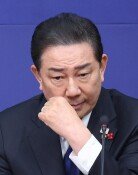Medical students must return now
Medical students must return now
Posted March. 26, 2025 07:44,
Updated March. 26, 2025 07:44
“Even if medical residents resign from training hospitals, they can still work as licensed doctors. But we have no alternatives. If we’re expelled, we lose our status as medical students, and no one will take responsibility. We’ve fought for a year. Isn’t that enough?”
This is part of a post written by a medical student on an online forum, as most of the 40 medical schools across the country have set March 31 as the deadline for students on a year-long leave of absence to return. The once-unified front of medical students protesting the government's plan to increase medical school enrollment is now showing signs of breaking. At Korea University and Yonsei University, which accepted reinstatement applications until March 21, about half of the students have applied to return. At Yonsei, the highest return rate was among first-year students who took a leave as soon as they entered last year.
The shift from defiance to return stems largely from the government and universities' hardline stance. Of the 40 medical schools, 35 have rejected leave of absence requests as of March 21, in protest against the enrollment hike. Most schools will close the application period for reinstatement and registration by March 31. Korea University, Yonsei University, and CHA University have already sent notices on March 24, warning that students who fail to register will be expelled.
Seoul National University and most others have also set this week as the deadline. Many students remain hesitant, fearing they will be labeled “traitors” if they return. Amid this climate, more voices within the medical community are urging an end to what they see as a reckless protest that endangers the future of younger students.
One of the most vocal is Lee Dong-wook, head of the Gyeonggi branch of the Korean Medical Association, known for his hardline stance. On March 24, in a group chat with hundreds of doctors, he wrote, “If there is no plan to help students facing expulsion or forced leave, then as adults, we should advise them to stop and return. Let’s not rely on medical students anymore.”
He is right. Unlike residents who can reenter the job market, medical students do not yet have licenses. Expulsion from university makes reentry difficult. Senior doctors, unable to take responsibility for students' futures, should not push them into a corner. Medical students must also recognize reality and leave the political struggle to their senior colleagues.
“I am deeply sorry and ashamed that we, as seniors, have failed to protect our juniors and offer them a vision for the future. The greatest victims of this situation are the students. Even if things remain unresolved, I earnestly urge you to return to your studies.”
This is part of a statement issued by Korea University Medical School’s emergency faculty committee on March 21. It reflects a clear understanding of the current crisis and sincere concern from professors for their students. Returning to school is not about winning or losing. Students’ voices against the enrollment policy will carry more weight when expressed within the academic setting. Senior doctors must help create a path back to school for their juniors. Preventing a mass expulsion crisis is essential to safeguarding the future of Korean healthcare.



![보일러 풀가동해도 춥다?…난방비 폭탄 범인은 ‘이것’ [알쓸톡]](https://dimg.donga.com/c/138/175/90/1/wps/NEWS/IMAGE/2025/12/24/133029046.3.png)



